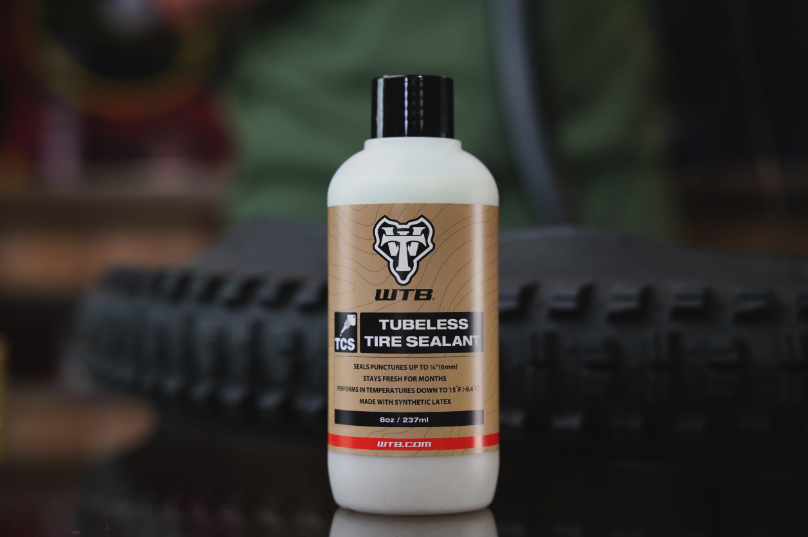What is Tubeless Sealant?
Tubeless sealant is a sticky liquid poured into tubeless tires. When a puncture occurs, it quickly flows into the hole, reacts with air, and solidifies, sealing the puncture in the tire.

How Does Tubeless Sealant Work?
Tubeless sealant is typically a blend of latex, glycol, water, small solid particles, and various additives, such as thickeners and rust inhibitors. The latex component solidifies quickly when it comes in contact with air, effectively sealing holes. Glycol lowers the sealant’s freezing point, allowing it to work even in low temperatures. Thickeners help adjust the liquid’s viscosity, while rust inhibitors protect metal components, like rims, from corrosion.
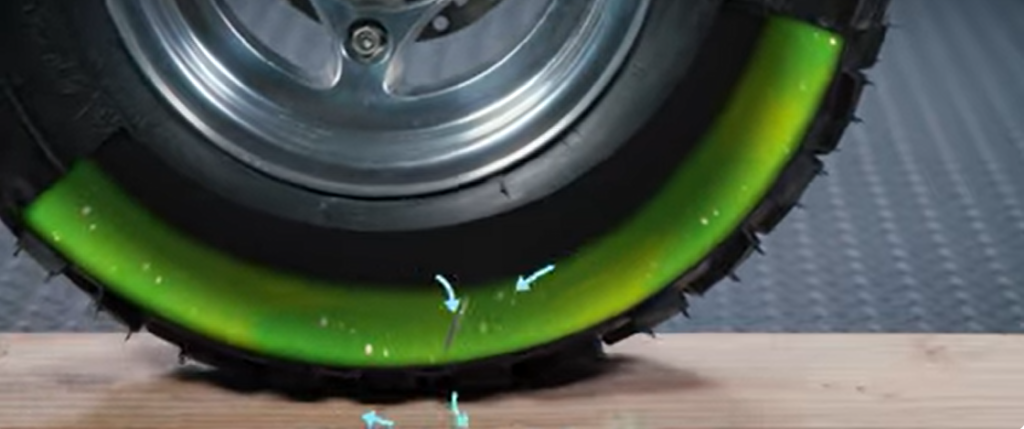
When sharp objects like nails or glass puncture a tubeless tire, the air pressure inside the tire pushes the sealant and solid particles toward the puncture. Once the latex in the sealant reacts with air, it quickly solidifies, sealing the hole to prevent air loss. This keeps the tire pressure stable and allows continued riding.
Key Performance Characteristics of Different Tubeless Sealants
Puncture Sealing Ability
This is the most critical performance measure for tubeless sealant, indicating how effectively it seals punctures. Manufacturers usually rate this by the maximum diameter of holes the sealant can seal. High-quality tubeless sealants can seal punctures up to 6-8 mm in diameter. The latex material largely determines this performance.
Air Retention
After sealing a puncture, tubeless sealant should retain air effectively. This is measured by the tire’s pressure drop over time. A sealant that allows less than a 10% drop in tire pressure within 24 hours of a puncture is considered to have good air retention. The choice of latex material also impacts this feature.
Appropriate Viscosity
If the viscosity is too high, the sealant may struggle to flow quickly into punctures. If it’s too low, the sealant may spread unevenly inside the tire. Generally, tubeless sealants with a viscosity between 1000 – 3000 mPa·s at 20°C perform best. Thickeners are mainly responsible for adjusting this property.
Low-Temperature Flow
In cold weather, liquids tend to become more viscous. High-quality tubeless sealants maintain sufficient flow at temperatures as low as -20°C, ensuring effective puncture sealing. The glycol content primarily determines this performance.
Will Tubeless Sealant Degrade Over Time?
Yes. If the tubeless sealant remains in your tire for 12 months without a puncture, it may become thicker, and the latex may lose some of its effectiveness. As a result, the sealant may not flow into punctures quickly. Even if it does reach the hole, it may not solidify fast enough to seal it, which would prevent the tire from retaining pressure after a puncture.
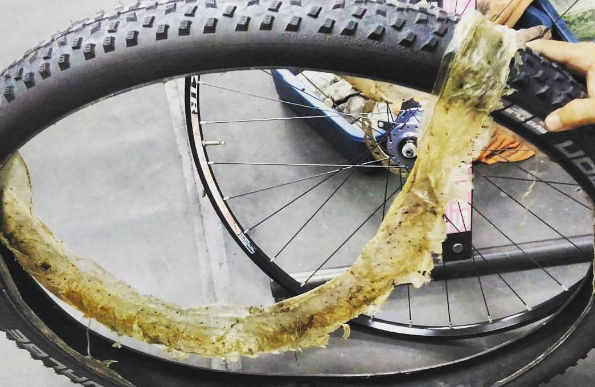
How to Replace Expired Tubeless Sealant?
Generally, it’s recommended to replace tubeless sealant every 10-12 months. To do this, first remove all the old sealant from the tire and clean any remaining residue from the inner walls and the rim surface. After cleaning, let the tire and rim dry thoroughly to ensure no moisture remains. Once they are clean and dry, you can inject new tubeless sealant. The required amount varies based on tire size and the sealant’s instructions, usually ranging between 100 – 200 ml. After injecting the new sealant, reinstall the valve and inflate the tire, then check the tire pressure and balance.
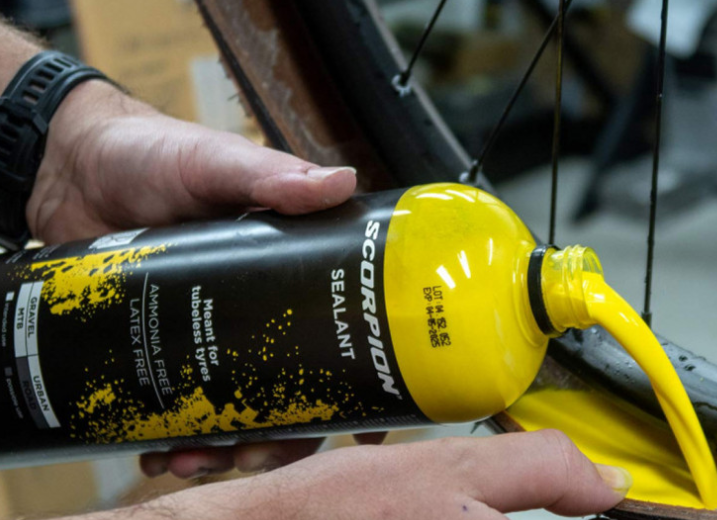
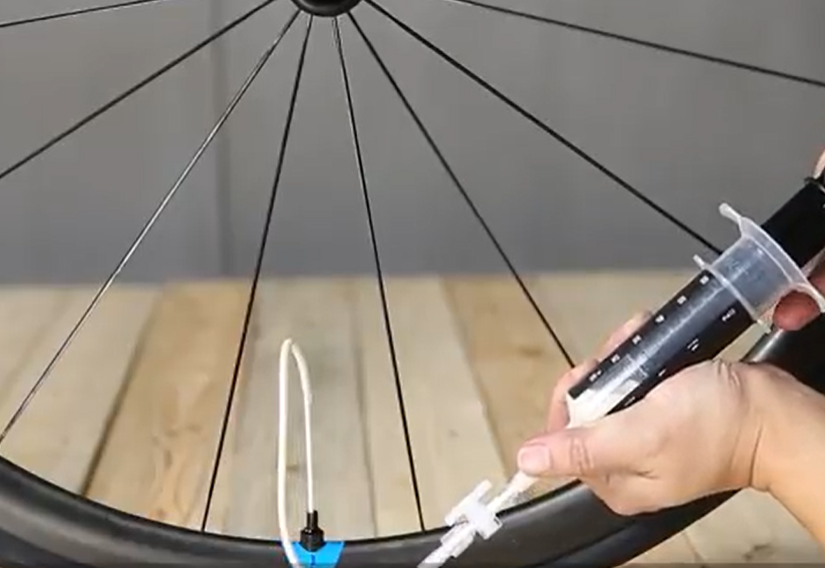
How Often Should You Add Tubeless Sealant?
Some brands give an estimated lifespan for their tubeless sealant, though most don’t specify this clearly. For instance, Finish Line states, “The porosity of tires varies widely. Porosity and climate affect tubeless sealant lifespan. Refresh as needed.” This makes sense, as different tires, climates, and riding conditions yield different results. Checking the sealant monthly is wise, but from experience, it generally lasts much longer. In fact, you might find yourself considering sealant replacement only when it’s time to change your tires.
How to Check Tubeless Sealant’s Condition?
There are several ways to check your sealant’s condition. You can use a syringe to pull out some remaining liquid and examine it, or shake the wheel to listen for movement inside. The simplest method is to rotate the tire so the valve is at the lowest point, then let it sit for about 10 minutes. Deflate the tire, remove the valve core, and lay the wheel flat on the ground. A small amount of sealant should flow out from the valve. If not, it’s time to add more.
How Much Tubeless Sealant Do You Need?
There’s no exact standard, but most brands list a recommended amount on the bottle. As a general guideline, use 60 ml for road tires narrower than 30 mm, with larger amounts needed for wider tires.
Can You Mix Different Brands of Tubeless Sealant?
Generally, it’s not recommended, but there are some exceptions. Based on user feedback, some sealants from different brands mix well and even perform better together. However, no brands officially endorse mixing, so it’s best to avoid combining them.
Highly Recommended Tubeless Sealant Brands and Models
Based on our experience, here’s a list of top choices. These sealants not only excel at puncture protection but also offer unique qualities that make them ideal for specific types of riders. Choose the one that fits your needs best:
Stan’s No Tubes Original: Works well in extreme temperatures but has a very strong odor.
Orange Seal Endurance Formula: Has a long lifespan but is difficult to mix properly.
Effetto Mariposa Caffelatex: Seals punctures very quickly but struggles with larger holes.
Bontrager TLR: Has a bright color for easy puncture detection but is hard to clean.
Finish Line Fiberlink: Mixes easily, but its bottle isn’t user-friendly for pouring.
Muc-Off No Puncture Hassle: Odorless and doesn’t clump but can’t seal larger punctures.
Silca Ultimate: Effective on larger punctures, though it doesn’t support adding extra particles.
Panaracer Seal Smart: Handles multiple punctures well, but its high viscosity makes it hard to inject with a syringe.
WTB TCS: Contains more synthetic latex and less volatile liquid, resulting in high viscosity that also complicates syringe injection.
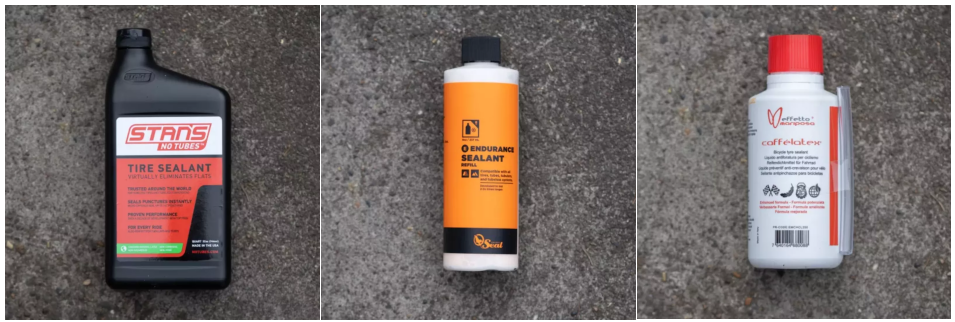
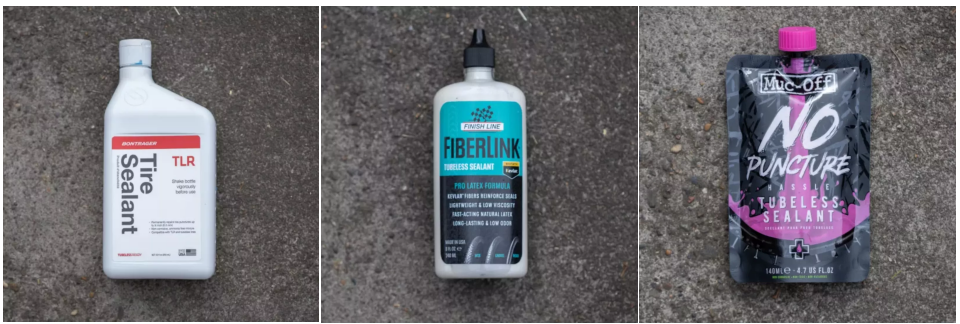
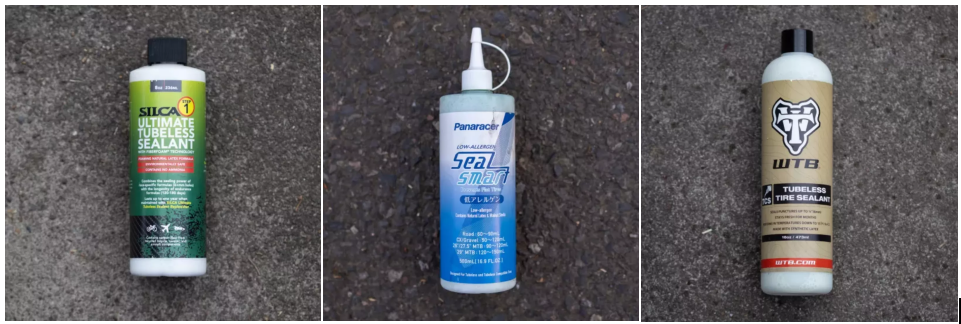
By the way, SUMLON has been manufacturing bicycle parts for over 15 years. Contact us if you are looking for a bike parts factory or a one-stop wholesaler. Peace


